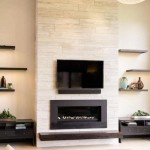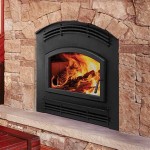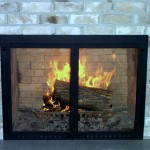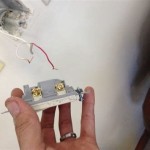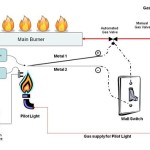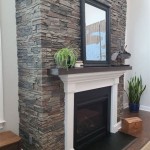Can You Change a Gas Fireplace to Wood Burning? A Comprehensive Guide
The desire to transition from a gas fireplace to a wood-burning fireplace is a common one. Many homeowners appreciate the aesthetics, aroma, and perceived authenticity of a traditional wood fire. However, the viability and complexity of such a conversion depend on a multitude of factors, including the existing fireplace structure, local regulations, and the homeowner's willingness to undertake significant renovations.
Generally, directly converting a gas fireplace insert to a wood-burning one is not a straightforward process, and in many cases, it is not feasible. Gas fireplaces and wood-burning fireplaces are designed with significantly different requirements for safety, ventilation, and construction materials. Attempting a direct conversion without addressing these discrepancies can be dangerous and violate building codes.
This article will explore the reasons why a direct conversion is often impractical, the potential alternative solutions, and the key considerations involved in making the change, offering a comprehensive overview for homeowners contemplating this project.
Structural and Design Differences
The fundamental design differences between gas and wood-burning fireplaces are substantial and impact the feasibility of conversion. These differences relate to firebox construction, venting systems, and overall structural integrity.
Gas fireplaces are typically constructed with lighter-weight materials compared to their wood-burning counterparts. This is because gas burns cleaner and at a lower temperature than wood. The firebox in a gas fireplace might be made of metal or refractory materials that are not designed to withstand the intense heat generated by a wood fire. The prolonged exposure to high temperatures from wood combustion can cause warping, cracking, or even structural failure of a gas fireplace insert not designed for such use.
Wood-burning fireplaces, on the other hand, are specifically designed to handle the high temperatures and corrosive byproducts of wood combustion. They are constructed with heavy-duty firebricks that line the firebox, providing insulation and protecting the surrounding structure from heat damage. The firebricks also help to radiate heat into the room, improving the fireplace's efficiency.
Furthermore, the opening of a gas fireplace is often significantly smaller than that of a wood-burning fireplace. This is because gas fireplaces typically have glass fronts to contain the flames and improve efficiency. A wood-burning fireplace requires a larger opening to allow for adequate air intake and to accommodate the size and placement of logs.
The foundation and surrounding structure may also need reinforcement to support the added weight and stress of a wood-burning system. Existing gas fireplace installations may not have the required structural support for the heavy firebrick and masonry that are critical for a safe and efficient wood-burning fireplace.
Venting System Discrepancies
One of the most critical differences between gas and wood-burning fireplaces lies in their venting systems. Gas fireplaces utilize different types of vents compared to wood-burning fireplaces. These differences are significant for safety and efficiency.
Gas fireplaces typically use either direct vent or B-vent systems. Direct vent systems draw combustion air from outside the home and vent exhaust gases directly outdoors through a sealed system. This system is highly efficient and minimizes the risk of carbon monoxide poisoning. B-vent systems, on the other hand, draw combustion air from inside the home and vent exhaust gases through a single-walled pipe. B-vents are less efficient than direct vents and require careful installation to prevent backdrafting and carbon monoxide leakage.
Wood-burning fireplaces, however, require a chimney designed specifically for wood combustion. These chimneys are typically constructed of masonry or metal and are designed to withstand high temperatures and corrosive byproducts of wood smoke. The chimney must also be properly sized to ensure adequate draft, which is essential for drawing smoke out of the fireplace and preventing it from entering the home.
Using a gas fireplace vent for a wood-burning fireplace is extremely dangerous. The high temperatures and creosote buildup from wood combustion can damage or even melt the gas vent, potentially leading to a house fire or carbon monoxide poisoning. The diameter of a gas vent is also generally smaller than what is required for a wood-burning fireplace, which can lead to inadequate draft and smoke spillage.
Therefore, any conversion from a gas fireplace to a wood-burning fireplace would necessitate the complete removal of the gas venting system and the installation of a properly sized and constructed chimney that meets all applicable building codes. This can be a costly and time-consuming undertaking, often involving significant structural modifications to the home.
Regulatory and Safety Considerations
Local building codes and safety regulations play a crucial role in determining the feasibility of converting a gas fireplace to a wood-burning fireplace. These regulations are in place to protect homeowners and the community from the hazards associated with improperly installed or maintained fireplaces.
Before undertaking any fireplace conversion project, it is essential to consult with your local building department to determine the specific requirements for wood-burning fireplaces in your area. These requirements may include restrictions on the type of chimney allowed, the size and location of the fireplace, and the types of wood that can be burned. Some municipalities may even prohibit the installation of new wood-burning fireplaces altogether, particularly in areas with air quality concerns.
Furthermore, the installation of a wood-burning fireplace must comply with all applicable safety standards, such as those set by the National Fire Protection Association (NFPA). These standards cover a wide range of issues, including chimney construction, clearance to combustible materials, and the installation of smoke detectors and carbon monoxide detectors.
Improperly installed wood-burning fireplaces can pose significant safety risks, including chimney fires, carbon monoxide poisoning, and house fires. Ensuring proper installation and adherence to all applicable regulations are paramount. Hiring qualified and licensed professionals, such as chimney sweeps and fireplace installers, is crucial to ensuring safety and compliance. These professionals have the expertise and experience to properly assess the existing fireplace structure, design and install a safe and efficient venting system, and ensure that the fireplace meets all applicable codes and regulations.
Attempting a DIY conversion without the necessary knowledge and expertise can be extremely dangerous and could result in serious injury or property damage. It is always best to err on the side of caution and seek professional guidance when dealing with such a complex and potentially hazardous project.
In addition to building codes, homeowners should also be aware of any homeowner association (HOA) rules or covenants that may restrict the installation or use of wood-burning fireplaces. Some HOAs may prohibit wood-burning fireplaces altogether due to concerns about smoke pollution or fire hazards. It is important to review the HOA's governing documents before proceeding with any fireplace conversion project.
Even if a conversion is technically feasible and permitted, homeowners should consider the environmental impact of burning wood. Wood smoke contains particulate matter and other pollutants that can contribute to air pollution and respiratory problems. Using a certified EPA-approved wood stove or fireplace insert can help to reduce emissions, but it is still important to burn only dry, seasoned wood and to follow best practices for fire management to minimize air pollution.
In conclusion, converting a gas fireplace to a wood-burning fireplace is a complex undertaking that requires careful planning, professional expertise, and adherence to all applicable codes and regulations. While it may be possible in some cases, it is often not feasible due to structural limitations, venting discrepancies, and safety concerns. Homeowners should carefully weigh the costs and benefits of such a conversion before proceeding and should always prioritize safety and compliance.

Want To Convert Gas Wood Fireplace Full Service Chimney

Want To Convert Gas Wood Fireplace Full Service Chimney

Replacing A Gas Fire With Wood Burner

Should You Change Or Convert Your Wood Fireplace

Do You Want To Replace Your Gas Fire With A Woodburner

Convert Gas Fireplace To Wood

Want To Convert Gas Wood Fireplace Full Service Chimney

Converting A Fireplace To Wood Burning Stove Chesneys

Do You Want To Replace Your Gas Fire With A Woodburner

Can A Wood Burning Fireplace Be Converted To Gas The Flame Company


